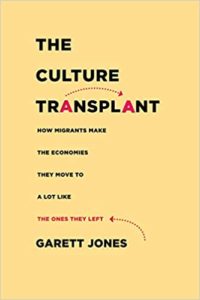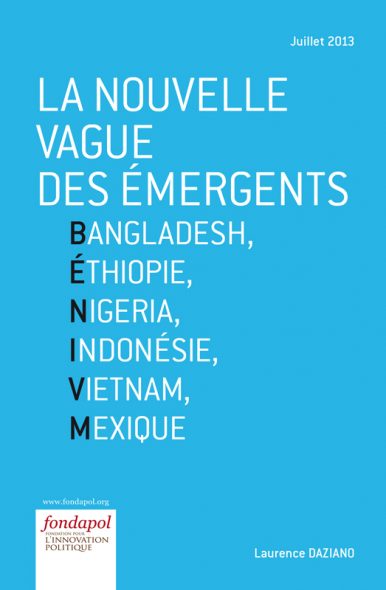Report on Socio-Economic Challenges in European Urban Peripheries and Sustainable Development Goal Alignment
1. Overview of Urban Marginalization
An analysis of peripheral urban areas in Western European capitals reveals significant challenges to achieving key Sustainable Development Goals (SDGs). Many suburban districts, particularly those surrounding major cities like Paris, Berlin, and Brussels, exhibit conditions of severe socio-economic distress. These areas often function as zones for marginalized populations, including immigrant communities facing integration failures, thereby undermining the foundational principles of inclusive development.
2. Deficiencies in Meeting SDG 10 (Reduced Inequalities)
The socio-spatial segregation observed in these suburban peripheries represents a direct contradiction to SDG 10. Key indicators of this inequality include:
- Systemic Segregation: Immigrant and low-income populations are often concentrated in under-resourced suburban areas, creating a stark divide between the metropolitan core and its periphery.
- Employment Discrimination: Residents, particularly ambitious youth, face significant barriers to economic mobility. A prevalent form of discrimination involves the need to conceal their home address on curriculum vitae to avoid prejudice, highlighting a failure to ensure equal opportunity for all.
- Failure of Integration: The conditions point to a systemic failure to integrate immigrant communities, perpetuating cycles of exclusion and inequality.
3. Impediments to SDG 4 (Quality Education) and SDG 8 (Decent Work and Economic Growth)
The social indicators within these marginalized suburbs demonstrate significant setbacks for progress on SDG 4 and SDG 8.
- Educational Disadvantage: Educational attainment levels in these zones are frequently among the lowest in their respective nations, limiting human capital development and future opportunities. This contravenes the goal of inclusive and equitable quality education for all.
- Economic Exclusion: High unemployment rates and a lack of decent work opportunities are characteristic of these areas. This environment stifles economic growth and prevents residents from achieving productive employment and decent work.
4. Undermining SDG 11 (Sustainable Cities and Communities) and SDG 16 (Peace, Justice and Strong Institutions)
The physical and social environment of many European suburbs is inconsistent with the aims of SDG 11 and SDG 16.
- Lack of Safe and Inclusive Human Settlements: Described as “run-down dumping grounds,” these areas fail to meet the SDG 11 target of making cities and human settlements inclusive, safe, resilient, and sustainable.
- Prevalence of Illicit Activity: The high incidence of criminality—including petty crime, organized crime, and drug-related activities—erodes community safety and undermines SDG 16, which seeks to promote peaceful and inclusive societies and provide access to justice for all.
1. Which SDGs are addressed or connected to the issues highlighted in the article?
The article highlights several interconnected social and economic issues prevalent in the suburbs of Western European capitals, which directly relate to the following Sustainable Development Goals (SDGs):
- SDG 10: Reduced Inequalities: The core theme of the article is the social and economic exclusion of immigrants who are “shunted” into specific areas, leading to significant inequalities. The discrimination faced by residents when applying for jobs is a clear example of inequality of opportunity and outcome.
- SDG 11: Sustainable Cities and Communities: The description of suburbs as “run-down dumping grounds” with high criminality points to a failure in creating inclusive, safe, and sustainable urban environments for all residents.
- SDG 8: Decent Work and Economic Growth: The article explicitly mentions that “social indicators on… employment are among the nation’s worst” and that young people struggle to “get out,” indicating a lack of decent work and economic opportunities.
- SDG 16: Peace, Justice and Strong Institutions: The prevalence of “petty, organised or drug-related” criminality suggests a breakdown in peace and security, indicating challenges to the rule of law and the effectiveness of institutions in these areas.
- SDG 4: Quality Education: The article notes that “social indicators on education… are among the nation’s worst,” directly connecting the issues to the goal of ensuring inclusive and equitable quality education.
2. What specific targets under those SDGs can be identified based on the article’s content?
Based on the issues discussed, the following specific SDG targets are relevant:
-
SDG 10: Reduced Inequalities
- Target 10.2: “By 2030, empower and promote the social, economic and political inclusion of all, irrespective of… origin, or other status.” The article’s central point about societies having “failed to integrate” immigrants who are shunted into specific suburbs directly addresses the failure to achieve this target.
- Target 10.3: “Ensure equal opportunity and reduce inequalities of outcome, including by eliminating discriminatory… policies and practices.” The example of ambitious youngsters having to hide their real home address on their CVs to get a job is a direct illustration of discriminatory practices that prevent equal opportunity.
-
SDG 11: Sustainable Cities and Communities
- Target 11.1: “By 2030, ensure access for all to adequate, safe and affordable housing and basic services and upgrade slums.” The description of the suburbs as “run-down dumping grounds” implies a lack of adequate and safe housing, which this target aims to address.
-
SDG 8: Decent Work and Economic Growth
- Target 8.5: “By 2030, achieve full and productive employment and decent work for all…” The mention of employment indicators being “among the nation’s worst” shows a clear gap in achieving this target for the residents of these suburbs.
- Target 8.6: “By 2020, substantially reduce the proportion of youth not in employment, education or training.” The focus on “ambitious youngsters looking to ‘get out'” and poor education and employment indicators points to a high proportion of youth facing these challenges.
-
SDG 16: Peace, Justice and Strong Institutions
- Target 16.1: “Significantly reduce all forms of violence and related death rates everywhere.” The statement that “criminality—whether petty, organised or drug-related—is often rife” directly relates to the need to reduce violence and crime.
3. Are there any indicators mentioned or implied in the article that can be used to measure progress towards the identified targets?
The article mentions or implies several indicators that can be used to measure progress:
- Employment/Unemployment Rates: The article explicitly states that “social indicators on… employment are among the nation’s worst.” This directly points to using unemployment rates, particularly youth unemployment (Indicator 8.6.1: Proportion of youth not in employment, education or training), as a key metric.
- Educational Attainment Levels: Similarly, the mention of “social indicators on education” being poor implies that metrics like school completion rates, academic performance, or literacy rates are relevant for tracking progress under SDG 4.
- Crime Rates: The reference to “rife” criminality suggests that official crime statistics (e.g., number of reported crimes per 100,000 population) would be a direct indicator for Target 16.1.
- Perception of Discrimination: The anecdote about job applicants hiding their address implies a high level of perceived or actual discrimination. This could be measured by surveys on discrimination (related to Indicator 10.3.1: Proportion of population reporting having personally felt discriminated against).
- Housing Quality: The term “run-down dumping grounds” implies poor housing conditions. This can be measured by Indicator 11.1.1 (Proportion of urban population living in slums, informal settlements or inadequate housing).
4. Create a table with three columns titled ‘SDGs, Targets and Indicators” to present the findings from analyzing the article. In this table, list the Sustainable Development Goals (SDGs), their corresponding targets, and the specific indicators identified in the article.
| SDGs | Targets | Indicators (Mentioned or Implied in the Article) |
|---|---|---|
| SDG 10: Reduced Inequalities | 10.2: Promote social, economic, and political inclusion. 10.3: Ensure equal opportunity and reduce inequalities of outcome. |
Incidence of discrimination based on home address/origin; Social integration levels of immigrant populations. |
| SDG 11: Sustainable Cities and Communities | 11.1: Ensure access for all to adequate, safe and affordable housing. | Proportion of population living in “run-down” areas or inadequate housing. |
| SDG 8: Decent Work and Economic Growth | 8.5: Achieve full and productive employment and decent work for all. 8.6: Reduce the proportion of youth not in employment, education or training. |
Local employment/unemployment rates; Youth unemployment rate. |
| SDG 4: Quality Education | 4.1: Ensure that all girls and boys complete free, equitable and quality primary and secondary education. | Local educational attainment levels and outcomes. |
| SDG 16: Peace, Justice and Strong Institutions | 16.1: Significantly reduce all forms of violence. | Local crime rates (petty, organised, drug-related). |
Source: economist.com






